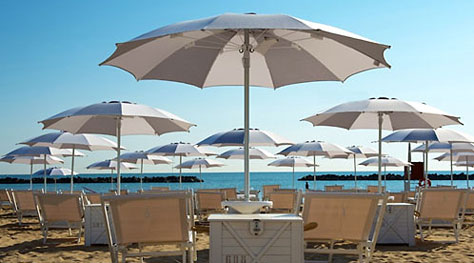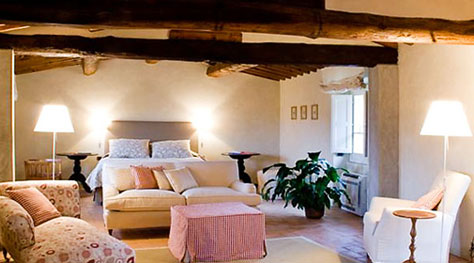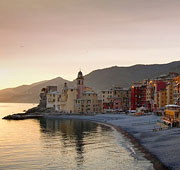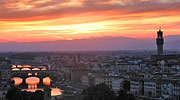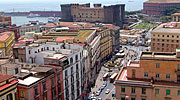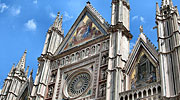Italy Underground
Some of Italy's most fascinating sights lie just below the surface.
Italy is more than meets the eye in a variety of ways. Its beauty is rooted in millenia of history, its culture in successive waves of empires and invaders, its cuisine a complex tapestry of heirloom and exotic. But if you want to dig beneath the surface to see the hidden side of Italy in the simplest sense, it's enough to head underground.
Lying underneath many of Italy's cities is a vast warren of underground masterpieces, from crypts and catacombs to Etruscan burial grounds and Roman ruins. While most travellers to Italy limit themselves to the country's sights above ground, sometimes the most fascinating side of the Bel Paese is what lies below.
Here are some of the most interesting "buried treasures" hidden underground in Italy:
Florence: Crypt of Santa Reparata
Perhaps one of the most iconic buildings in Italy, the Duomo in Florence, with its ornate green and white marble exterior, is a feast for the eyes. But most visitors are so taken with the famous dome and bell tower that they never consider heading to the crypt below. Here, the remains of one of Florence's most ancient Christian churches, Santa Reparata, was excavated between 1965 and 1973. The foundation dates from around 400 AD, with further additions and modifications over the following 1,000 years until its demolition in 1379 to make room for the current Duomo.
Aside from the remains of the basilica, including a polychrome mosaic floor, a mid-14th century fresco, and remains of the walls and floors of adjoining houses dating from Roman times, the crypt also holds a number of tombs, including that of Brunelleschi, architect of the soaring dome, symbol of Florence.
Florence Cathedral, Baptistery, Duomo Museum & Bell Tower
Venture down into Florence Cathedral's Crypt of Santa Reparata to feel history beneath your feet and explore the pillars of Florentine culture with this multi-access pass.
Get your tickets now!
Naples: Il Gabinetto Segreto
Though now above ground, the contents of the Secret Cabinet rooms in the National Archaeological Museum in Naples spent millenia first below ground in the literal sense, and then in the figurative one. A collection of erotic and explicit artifacts dating from Roman times and found during excavations at nearby Pompeii, including frescoes and statues, depictions of the god Priapus, and phallic-shaped talismans and oil lamps, the finds were locked away in 1821 as deemed too titillating for the public.
For the next century, the collection was opened and closed to the public a number of times, according to fashion and politics. It was definitively reopened in the year 2000, and has been on display in a separate hall in the museum since 2005. A visit today is a fascinating look at the how the sexual mores of the ancient Romans differ from those of today.
National Archaeological Museum of Naples
Get access to the world's oldest and most spectacular classical art.
Get your tickets now!
Rome: Capuchin Crypt
One of the most startling underground sites in Italy is this group of six tiny chapels beneath Santa Maria della Concezione dei Cappuccini in Rome, which is adorned with the skeletal remains of almost 4,000 friars buried here between the 16th and 19th centuries. The remains are arranged in decorative patterns along the walls, from the ceiling as light fixtures, or simply in anonymous piles; the bones and skulls were taken from three cartloads of deceased friars the monks transported from their former monastery to their new church here in 1631 and from the monks who died during the following 300 years.
Though the crypts have been hailed as horrifying and macabre, the order holds that the message is simply a reminder of our mortality and the brevity of life. Indeed, in the Crypt of the Three Skeletons, a final message declares, "What you are now, we used to be; what we are now, you will be..."
Capuchins Crypt - Music Art And Mystery
A succession of wonders will immerse you in the heart of sacred Rome, for an unforgettable experience.
Get your tickets now!
Orvieto: Orvieto Underground
The clifftop town of Orvieto in southern Umbria sits atop a dramatic tufa stone plug high above the surrounding plain, but its foundations are not as solid as they may seem. Since the time of the Etruscans, the inhabitants of this ancient city have been tunneling through the relatively soft volcanic stone to carve out wells, temples, olive oil mills, pigeon cotes, ceramic workshops, and - most recently - bomb shelters, with a total of over 1,200 caves of various sizes and uses now honeycombing the stone beneath the city.
A tour through this secret labyrinth of tunnels, passages, and caverns is a fascinating walk through over 1,000 years of history, as successive waves of civilizations made use of the cool and solid underground hideaways until just the past generation, when the practice was finally banned.
Cave System Pozzo della Cava
Descend underneath Orvieto and experience walking through a man-made cave system dating back 27 centuries...
Get your tickets now!
Genga: La Grotta di Frasassi
Italy has a number of spectacular underground caves from Puglia to the Alps, but one of the most memorable is the Frasassi karst cave system in Le Marche. Located in the stunning Alpennine mountains of Le Marche, Frasassi was discovered by speleologists in the late 1940s, and subsequent explorations in the 1970s brought to the light the vast scope and network of the cave system. Today visitors can see a number of immense caverns (some of the biggest in Europe), with breathtaking stalagmites and stalagtites, and underground lakes and streams.
Visits last a bit over an hour, and follow an easy path (though there are some stairs) through the dramatically lit caves and passages. For the more adventuresome, there is a speleological tour which lasts about two hours and gives visitors the chance to suit up and explore the cave off the tourist trail.


